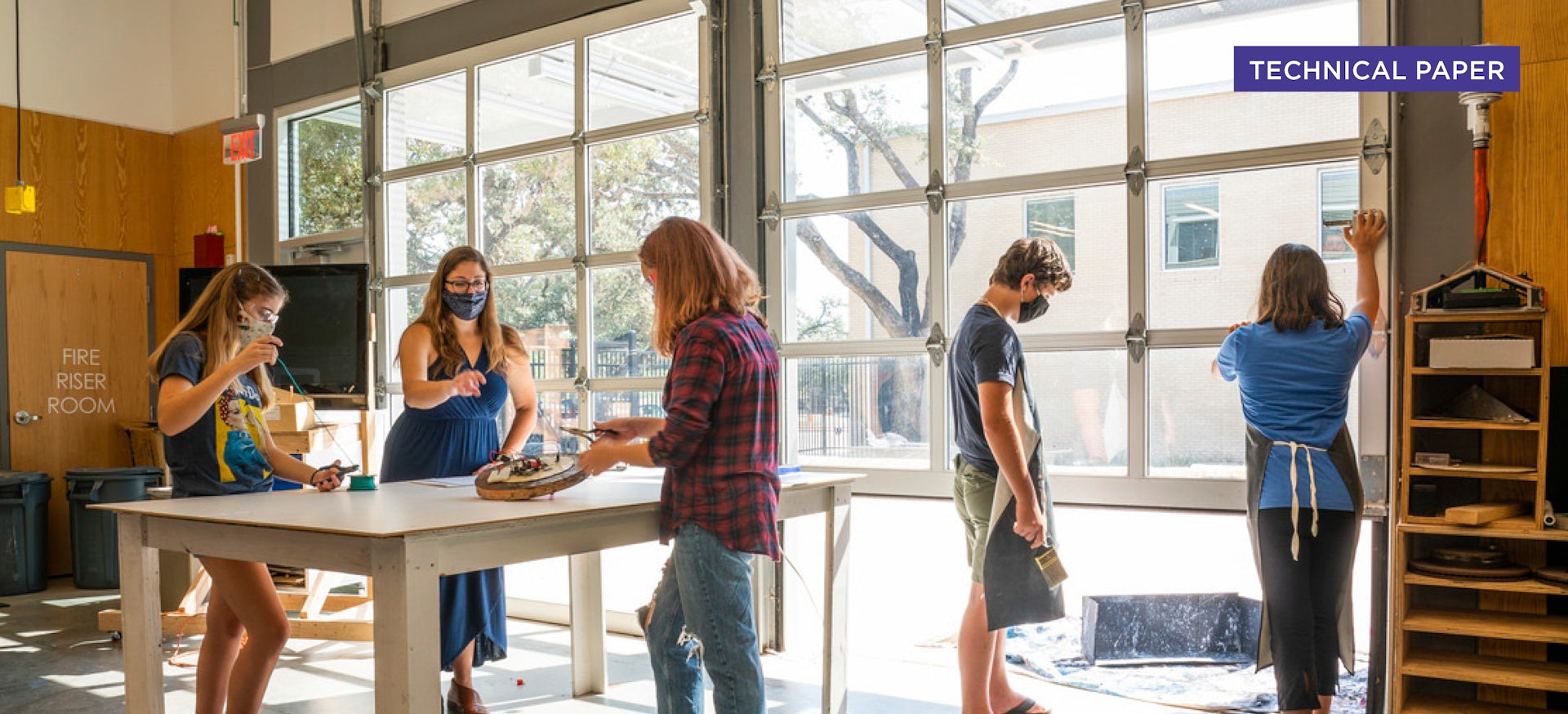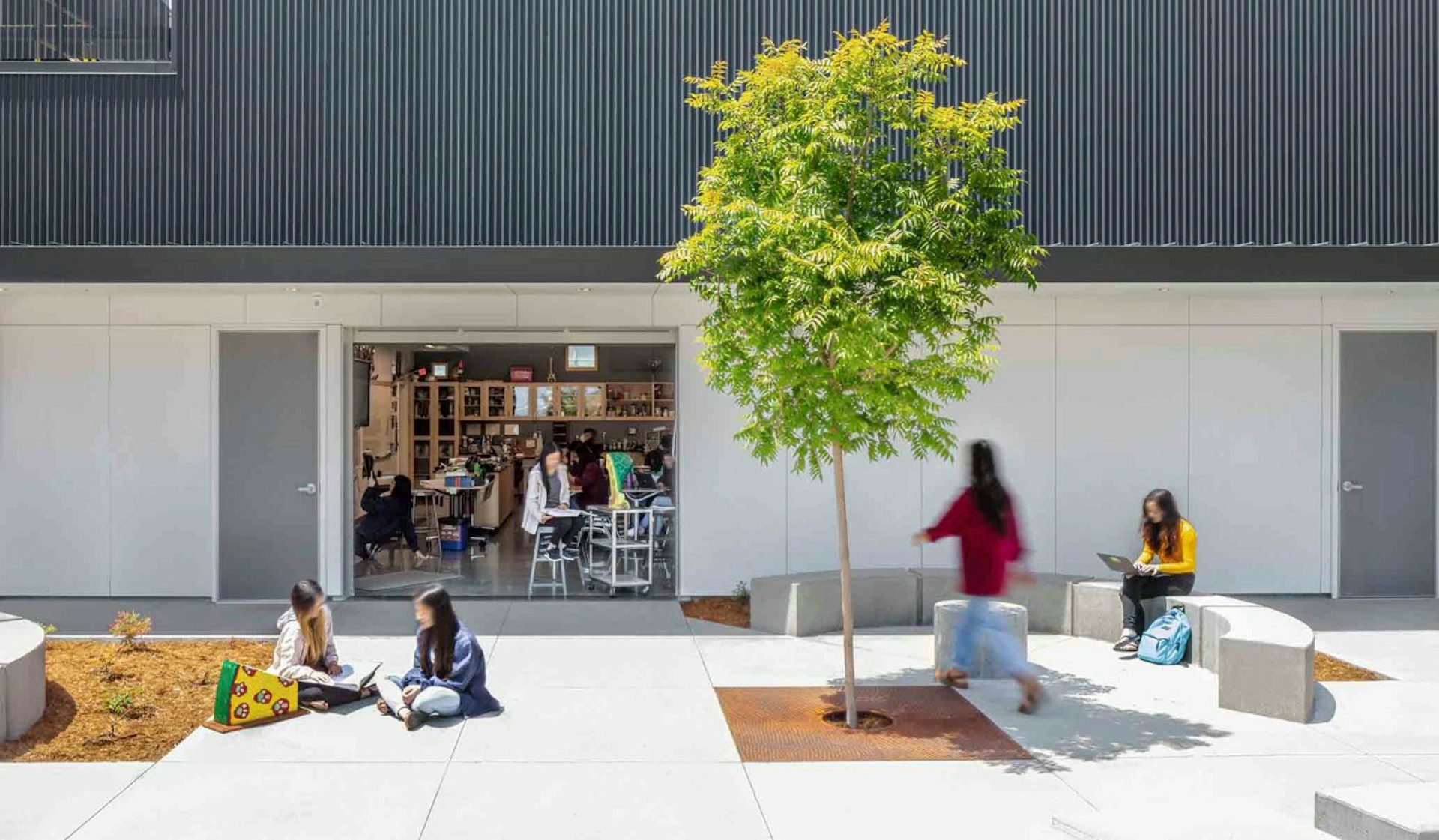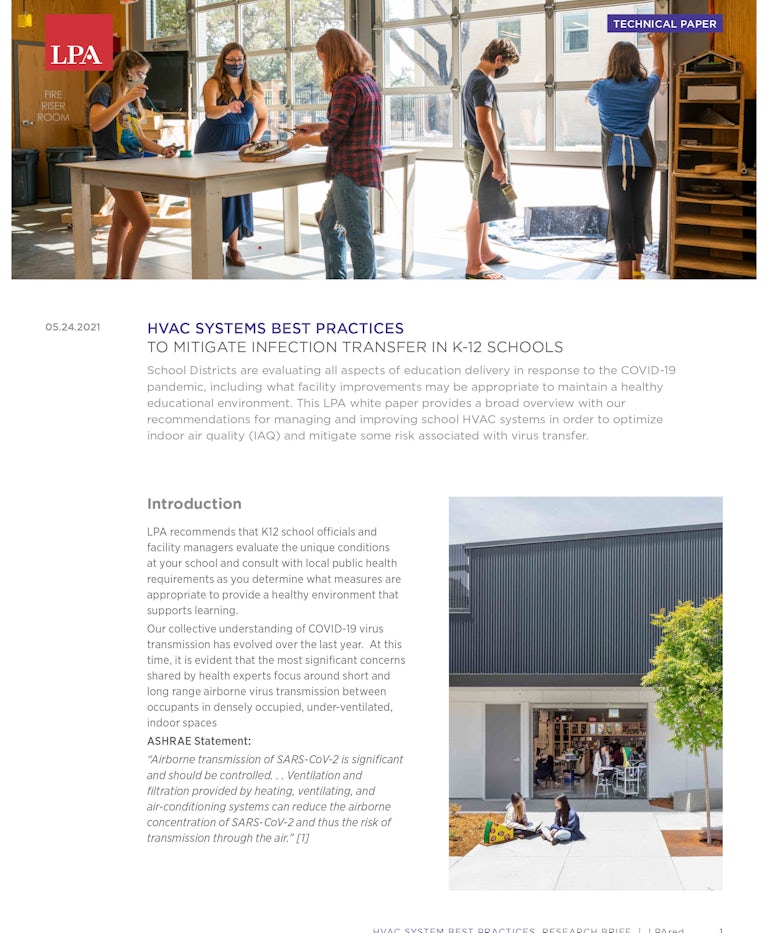This LPA white paper provides a broad overview with our recommendations for managing and improving school HVAC systems in order to optimize indoor air quality (IAQ) and mitigate some risk associated with virus transfer.
Introduction
LPA recommends that K-12 school officials and facility managers evaluate the unique conditions at your school and consult with local public health requirements as you determine what measures are appropriate to provide a healthy environment that supports learning.
Our collective understanding of COVID-19 virus transmission has evolved over the last year. At this time, it is evident that the most significant concerns shared by health experts focus around short- and long-range airborne virus transmission between occupants in densely occupied, under-ventilated, indoor spaces.
ASHRAE Statement:
“Airborne transmission of SARS-CoV-2 is significant and should be controlled. . . Ventilation and filtration provided by heating, ventilating, and air-conditioning systems can reduce the airborne concentration of SARS-CoV-2 and thus the risk of transmission through the air.” [1]
Administrative Measures (Source Controls)
Removing the source of potential infection is certainly a primary mitigation strategy.
KEEP INFECTED INDIVIDUALS AWAY
Implement policies that require that those who are infected with COVID-19, who show symptoms of illness, or who suspect that they may have become infected stay away from school facilities until it is clear they are not infectious.
FOLLOW PUBLIC HEALTH GUIDANCE
Follow all applicable and relevant local, state, and federal public health regulations regarding wearing face coverings, reduced occupant density, maintaining distance, and appropriate hygiene and sanitation. [2]
HVAC Measures (Engineered Controls)
Please note that HVAC measures described below do not address short-range, person-to-person transfer of infectious viruses and so the administrative and personal protective measures described above remain relevant, even where HVAC systems are operating optimally. Proper HVAC measures, however, will reduce IAQ pollutants, including SARS-CoV-2, reducing the risk of longer-range virus transmission between occupants of indoor spaces.
OPTIMIZE VENTILATION
Proper dilution of pollutants through ventilation is fundamental to maintaining good indoor air quality. Typical K-12 classrooms should have at least 500 cfm of outdoor air or around 3 air changes per hour (although the appropriate outdoor air rate must be determined based on room size, activity type, and occupant density). Good ventilation can be achieved through a combination of mechanical (HVAC) systems and natural ventilation via operable windows and doors. Preferably, classrooms will include HVAC systems with an air-side economizer and/or operable windows that allow the space to increase outdoor air ventilation when ambient conditions allow or IAQ concerns are heightened. K-12 facilities staff should regularly inspect and maintain HVAC systems, since poor ventilation may not always be obvious.
APPROPRIATE AIR FILTRATION
Maintaining air filters in schools is important for removing particulates and irritants from both outdoor and recirculated air. Classroom HVAC systems should include MERV-13 filters, if possible, although some HVAC systems will not be able to accommodate these high-efficiency filters, which generally are at least 2” thick and require reasonable fan power. Portable HEPA air filtration systems can be added to classrooms to effectively remove particulates — including very small particulates — although noise considerations should be carefully reviewed. All air filters (both in HVAC systems and portable filtration units) should be inspected frequently and replaced as required.
IAQ MONITORING
Permanent or portable carbon dioxide (CO2) monitors are an effective way to determine if a classroom is poorly ventilated. Generally, a well-ventilated space will maintain indoor CO2 concentration below 800 ppm while a classroom that regularly exceeds CO2 concentration of 1100 ppm should be evaluated for ventilation adjustments. Some air quality monitors can measure additional indoor pollutants, including particulates and volatile organic compounds (VOCs).
ULTRAVIOLET GERMICIDAL IRRADIATION (UVGI)
UVGI emitters are effective for preventing growth of microbes and can be used to supplement appropriate ventilation and filtration strategies. UVGI emitters are often installed within HVAC units to prevent growth of microbes on surfaces within the equipment. Adding upper-room UVGI emitters within classrooms is also possible, but this strategy is challenging, since occupants should not be exposed to the UV radiation which will cause eye and skin irritation and damage.
Other Considerations
ELECTRONIC AIR CLEANERS
LPA does not recommend installing electronic air cleaners (e.g., bi-polar ionization, plasma generators, photocatalytic oxidation, ozone generators, etc.) as an effective air quality management strategy. ASHRAE COVID guidelines simply state “Only use air cleaners for which evidence of effectiveness and safety is clear.” Electronic air cleaners, however, have not been proven to be effective in real-world conditions and there is some evidence and concern that electronic air cleaners can generate additional indoor pollutants. IAQ experts generally recommend avoiding these technologies and focusing on appropriate ventilation and filtration measures instead. [3]
DEEP CLEANING AND DISINFECTION OF SURFACES
Despite some early warnings, the CDC and others have now confirmed that COVID-19 is primarily transferred through the air and is unlikely to be transferred due to contact with surfaces. Excessive cleaning of surfaces with disinfectants is unlikely to impact infection control but may divert resources and attention from more meaningful measures. Applying excessive cleaning chemicals within a space may introduce irritants that create additional indoor air quality challenges. [4]
-----------
The material above has been developed with information and research reported to the general public by researchers and design practitioners as well as government health agencies. LPA is providing this information for your consideration and review. LPA has not participated in reaching any of the conclusions, nor is LPA qualified to provide medical or public health advice and has not conducted its own studies or research on the effects of the pandemic and has not verified the recommendations or conclusions of those qualified to render such advice. Ultimately, owners and occupiers must make their own strategic decisions for their individual stakeholders. LPA makes no representations or warranties regarding the accuracy or completeness of this material and disclaims all liability arising from use of these materials by others.


















